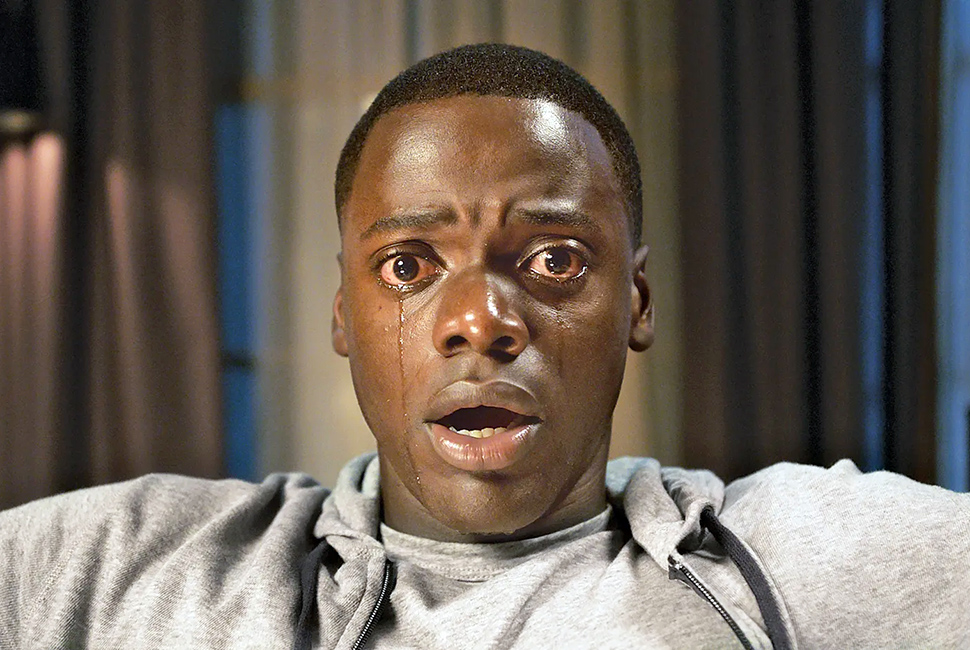It might be difficult to scare Robin Means Coleman. When it comes to watching horror films, she’s seen just about every conceived scenario. Coleman finds it difficult to quantify the number of horror films she’s seen over her lifetime. It’s probably safe to say, due to her scholarship and research of the genre, the number is well over a thousand.
Not only is Coleman Northwestern’s vice president and associate provost for diversity and inclusion and chief diversity officer, the Ida B. Wells and Ferdinand Barnett Professor in Communication Studies is also the leading scholar on Black representation in horror films. Her latest book takes a deep dive into the ways in which Black characters are portrayed in horror. In “The Black Guy Dies First: Black Horror Cinema, From Fodder to Oscar,” (Simon & Schuster, 2023) co-written by journalist Mark Harris, Coleman argues that the Black character’s tendency to be the first to die in horror films reflects larger cultural anxieties around race and violence.
Often associated with a lack of diversity and representation in the horror genre, and the subject of much criticism and analysis, “the Black guy dies first” is one of many tropes that Coleman and Harris examine in the book. Others include the “magical Negro” who is described as having a “special power or wisdom” to help the white hero advance in their quest. The “sacrificial Negro,” Coleman says, was “created for the sole purpose of sacrificing themselves to save the white hero.”
Coleman recently spoke with Northwestern Now about how Black horror films are what she calls a “social syllabus” and how her research into Black horror is closely connected to her work in diversity, equity and inclusion.
How did you get interested in the horror genre?
I was born and raised in Pittsburgh. For horror heads, I don’t have to say anything else. But for folks who don’t know, “Night of the Living Dead” and “Dawn of the Dead” were, for the most part, filmed in and around Pittsburgh. They used Pittsburghers as extras. People were watching that and seeing their neighbors in the film. George Romero, the director of those films and a lot of other horror films, went to Carnegie Mellon University. I took classes at Mellon, so I felt like I was walking in the footsteps of Romero. But I have memories of watching spooky movies like “King Kong” and “Frankenstein” on late night television with my mother and we would eat fried chicken livers and chocolate cake. It was delicious TV.
You write in the book, “Being killed in a horror movie isn’t the worst fate one can suffer. Being ignored is.” What do you mean by that?
Being ignored is about presence versus absence. There is the annihilation or the symbolic annihilation of Black folks in many horror films. While that is expected, it feels awful, particularly if it’s just for bloody fodder. But the ways in which blackness is sort of decimated in some films like “Night of the Living Dead” or “Little Marvin” or “Them,” they’re quite literally doing away with Black bodies. But then there is the presence of Black people like in Jordan Peele’s films “Get Out,” “Us” and “Nope,” where Black folks are present and they’re not just fodder to be disposed of. Being seen in that way is sort of the best. Exclusion, invisibility and absence are significant problems.
You credit George Romero for changing the way zombies are presented in films
Yes, until he made “Night of the Living Dead” in 1968, zombies were tied to Black deficiency around religion. Zombies were supposed to serve as an idealized kind of enslaved labor that was dull and responsive. But Romero cast a Black guy as a hero who was going to kick ass and take names in a white space, which we hadn’t seen. That was the first kind of sea change, which is important when we’re talking about the ways in which Black people show up in horror films.
How has Black horror evolved since the ’60s?
In the ’70s, it was the era that brought the so-called “blaxploitation” films. There was “Blacula,” “Scream Blacula Scream” and many more. That’s almost Black horror’s heyday. While low budget, the films were innovative and starred Black people and often written by Black writers. In the ’80s, Black horror kind of drops out and you have the return of Black people with moral deficiencies. In the ’90s, it’s all about hip hop and you have all these titles exploding with a “z,” like “Bloodz vs. Wolvez.” You also see a lot of rappers show up in horror films.
You talk about Black people finally being seen as human in films by Jordan Peele. He’s newer to the horror film scene. What kind of impact has he made?
The Black guy isn’t going to die first in a Jordan Peele film. In fact, the Black guy is going to live. All eyes are now on Peele because it’s a really big deal that “Get Out” won an Academy Award. It was a pivotal turning point for Hollywood to take notice and start backing these kinds of films.
What do you mean when you write “Black horror is our social syllabus?”
Much of Black horror is really politically driven around the quest for social justice. Horror teaches us about our anxiety, our fears, our social anxieties, the things that we are unwilling or unable to confront. Black horror films often have these themes that take on very challenging topics like brutality and murder by the hands of police and the exploitation of Black communities. For example, throughout “Get Out,” it’s about post-racial America and so-called liberalism. All these things about cultural fetishization are often taken up in Black horror.
How is your research of Black horror connected to your work in the DEI field?
They’re so intimately connected because Black horror is our social syllabus where you’re constantly looking for solutions around inclusion and belonging. Inclusion in the media space, including in front of and behind the screen, and in the writers’ room. Inclusion about the ways in which Blackness, Black life, culture, histories, esthetics, art and music all show up. What’s distinct is the solutions in horror are pretty bloody, right? They are a radically bloody solution to both exclusion or injustice that we clearly do not take up in our DEI work. It’s harder in some ways to imagine a horrifying Black world that is more horror facing than what we see at times now in real life.


